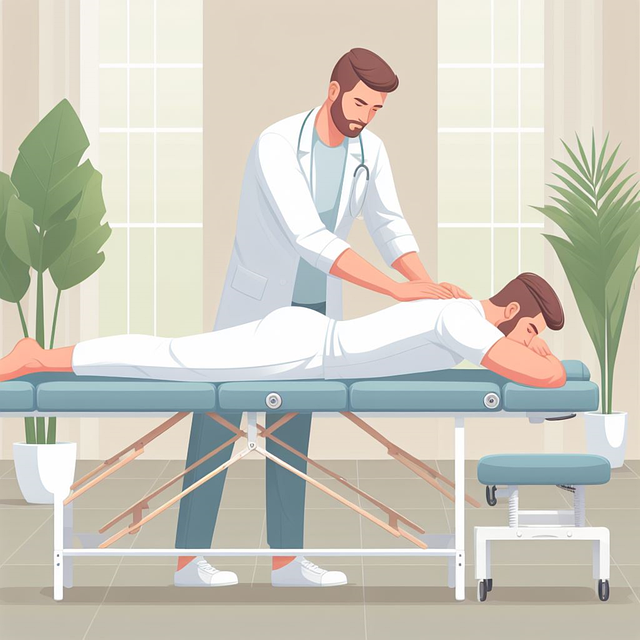Regenerative therapy programs, leveraging cutting-edge treatments like stem cells and growth factors, represent a revolutionary approach to healthcare. These innovative solutions target root causes of age-related decline and chronic conditions, offering hope for long-term relief in various fields from orthopedics to cardiology and neurology. To maximize benefits, individuals should adopt an holistic lifestyle, combining balanced diets, exercise, stress management, quality sleep, and mindfulness practices with cell-based treatments and tissue engineering. Despite access challenges, increasing recognition and investment are driving future prospects, promising transformative improvements in mobility, pain reduction, organ function, mental clarity, energy levels, and overall quality of life.
Enhance your quality of life with the transformative power of regenerative therapies—a cutting-edge approach to healthcare that taps into the body’s natural healing mechanisms. This article provides a comprehensive overview of regenerative therapy programs, exploring their potential to target key areas of well-being and improve overall health. From the scientific basis behind these treatments to practical integration into daily life, discover how regenerative practices can offer sustainable results. We also navigate access and future prospects within the health sector, highlighting the growing importance of regenerative therapy programs.
- Understanding Regenerative Therapy Programs: An Overview of Their Potential
- Targeting Key Areas: How These Therapies Improve Overall Well-being
- The Scientific Basis: Unlocking the Body's Natural Healing Mechanisms
- Integrating Regenerative Practices into Daily Life for Sustained Results
- Navigating Access and Future Prospects in the Health Sector
Understanding Regenerative Therapy Programs: An Overview of Their Potential

Regenerative therapy programs offer a promising approach to enhancing quality of life by harnessing the body’s inherent ability to heal and regenerate. These innovative treatments go beyond traditional medicine, aiming to restore function and structure in damaged tissues and organs. Through various techniques such as stem cell therapy, tissue engineering, and growth factor applications, regenerative therapy programs seek to rejuvenate and repair instead of merely managing symptoms.
The potential of regenerative therapy programs is vast, impacting areas ranging from orthopedics to cardiology and even neurological conditions. By promoting the body’s natural healing processes, these therapies can lead to improved mobility, reduced pain, and enhanced organ function. Moreover, regenerative medicine promises personalized treatment plans, offering hope for individuals seeking long-term relief and improved overall well-being.
Targeting Key Areas: How These Therapies Improve Overall Well-being

Regenerative therapies are designed to target key areas that significantly impact overall well-being. These advanced treatments go beyond traditional medicine by stimulating the body’s natural healing processes, addressing not just symptoms but underlying causes of age-related decline and chronic conditions. By harnessing the power of stem cells, growth factors, and other innovative techniques, regenerative therapy programs can enhance mobility, restore damaged tissues, and improve organ function.
The benefits extend beyond physical health. By reducing inflammation, promoting tissue regeneration, and supporting the immune system, these therapies contribute to mental clarity, improved sleep patterns, and increased energy levels. This holistic approach ensures that individuals not only feel better physically but also experience a higher quality of life, fostering a sense of vitality and overall well-being.
The Scientific Basis: Unlocking the Body's Natural Healing Mechanisms

Regenerative therapies are built upon a solid scientific foundation, focusing on harnessing the body’s natural healing mechanisms. These therapies aim to stimulate and accelerate the restoration of damaged tissues and organs by tapping into the patient’s inherent regenerative capabilities. The concept is rooted in our understanding of how the body naturally repairs itself after injury or disease.
By employing various techniques such as stem cell therapy, tissue engineering, and growth factor applications, regenerative therapy programs seek to mimic and enhance these natural processes. This approach has shown promising results across different medical fields, offering potential solutions for conditions previously considered incurable or chronically managed. The key lies in the body’s ability to regenerate, which, when supported by innovative medical interventions, can lead to significant improvements in overall quality of life.
Integrating Regenerative Practices into Daily Life for Sustained Results

Integrating regenerative practices into daily life is key to achieving sustained results from regenerative therapy programs. These therapies, ranging from cell-based treatments to tissue engineering, offer transformative potential for healing and rejuvenation. However, their long-term benefits require a commitment to lifestyle changes that support the body’s natural repair mechanisms. By adopting an holistic approach, individuals can optimize the effects of regenerative therapies and maintain improved health outcomes.
This involves making conscious decisions to nourish the body with a balanced diet rich in nutrients essential for tissue regeneration, regular physical activity to promote blood flow and cellular renewal, and stress management techniques to mitigate inflammation. Additionally, prioritizing quality sleep and engaging in mindfulness practices can further enhance the body’s ability to heal and recover. Integrating these regenerative practices into daily routines allows individuals to take an active role in their health, complementing medical interventions for a holistic and sustainable improvement in quality of life.
Navigating Access and Future Prospects in the Health Sector

Navigating access to regenerative therapy programs is a complex landscape for many individuals seeking improved quality of life. The healthcare sector, traditionally slow to adopt innovative treatments, is gradually recognizing the potential of regenerative therapies to revolutionize patient care. As such, there’s a growing demand for wider accessibility and increased investment in research and development. This shift towards embracing regenerative medicine holds immense promise for future health prospects.
The future looks promising with ongoing advancements in technology and scientific understanding. Continued exploration of autologous and allogeneic stem cell therapies, along with other regenerative techniques, could lead to breakthroughs in treating previously incurable conditions. Increased collaboration between researchers, healthcare providers, and regulatory bodies will be crucial to ensuring safe and effective implementation of these therapies on a larger scale.
Regenerative therapy programs have the potential to significantly enhance quality of life by harnessing the body’s natural healing mechanisms. By targeting key areas of well-being, these therapies offer a holistic approach to improving overall health and sustainability. As scientific understanding advances and access expands, regenerative practices are poised to revolutionize healthcare, providing folks with effective tools for navigating their own wellness journeys.
